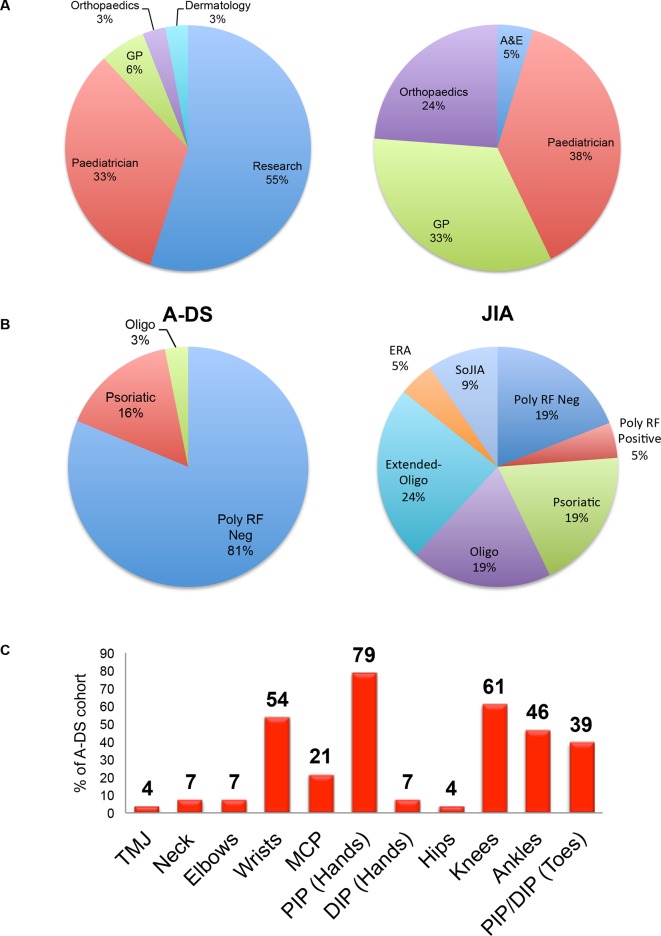Figure 3.
Route to rheumatology and ILAR classification of A-DS and JIA, plus presenting joints involved in A-DS. (A) The pie charts represent the route to rheumatology care for children diagnosed with A-DS (n=33) and JIA (n=21). Children with JIA are most commonly referred by their Paediatrician, GP or Orthopaedic team. In contrast, the majority of children diagnosed with A-DS were detected through the national musculoskeletal screening initiative (ie, research). (B) The pie charts represent the ILAR subtypes of arthritis observed in children diagnosed with A-DS (n=33) and JIA (n=21). (C) The bar chart represents the joints affected by arthritis at diagnosis in children diagnosed with A-DS. The most commonly affected joints in this cohort of children were the PIP joints of the hands. A-DS, arthropathy of DS; A&E, accident and emergency department; ERA, enthesitis-related arthritis; GP, general practitioner; ILAR, International League of Associations for Rheumatology; JIA, juvenile idiopathic arthritis; MCP, metacarpophalangeal joint; Oligo, oligoarticular arthritis; PIP/DIP, proximal/distal interphalangeal joint; Poly, polyarticular arthritis; RF, rhematoid factor; SoJIA, systemic-onset JIA; TMJ, temporomandibular joint.

